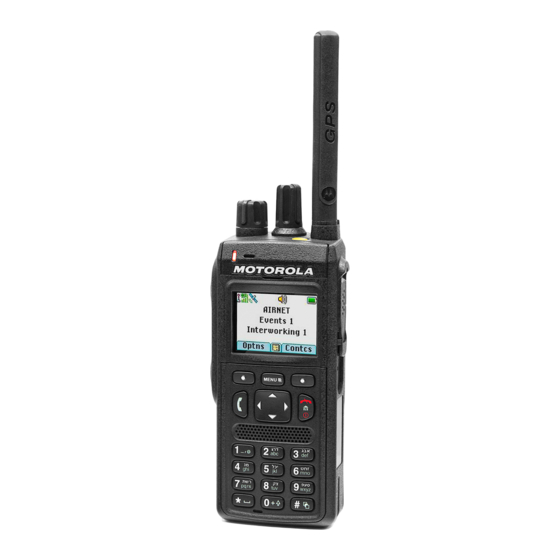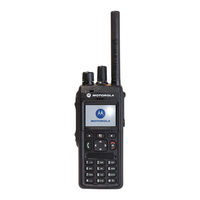
Motorola solutions MTP3550 Manuals
Manuals and User Guides for Motorola solutions MTP3550. We have 2 Motorola solutions MTP3550 manuals available for free PDF download: Feature User Manual, Basic Service Manual
Motorola solutions MTP3550 Feature User Manual (158 pages)
Brand: Motorola solutions
|
Category: Radio
|
Size: 1 MB
Table of Contents
-
-
Writing Text27
-
Keys Usage29
-
Word Locking31
-
Display33
-
Status Icons34
-
-
-
Menu Icons64
-
Messages65
-
New Message66
-
Inbox69
-
Outbox73
-
Templates74
-
Contacts81
-
Bluetooth84
-
Devices85
-
Browser88
-
Security89
-
PIN Protect89
-
K Validity91
-
Tmo Sck92
-
Dmo Sck92
-
Covert Mode93
-
Setup95
-
Vibrate95
-
Ring Style96
-
Set Volume97
-
Language97
-
Data Setup98
-
Audio98
-
Audio Toggle99
-
Tones100
-
Keypad Tone100
-
All Tones100
-
Talk Permit101
-
Clear to Send101
-
Periodic Alert101
-
D-PTT Tones102
-
Display102
-
Setting LCD off104
-
Time and Date105
-
Energy Economy106
-
Book on108
-
Rotary Knob108
-
Default Setting110
-
Group Setup110
-
Scan111
-
My Groups113
-
Individual Setup114
-
Trunked Mode114
-
Favorites115
-
My Info117
-
Recent Calls117
-
Shortcuts120
-
Networks121
-
Network Select121
-
Location123
-
Enabling GNSS124
-
Viewing Testpage124
-
Backlog125
-
Packet Data125
-
Crypto Menu126
-
-
Bluetooth129
-
Call-Out132
-
GNSS Icon136
-
GNSS Accuracy137
-
Individual Call137
-
Private Call138
-
Ms-Isdn139
-
One-Touch Dial139
-
WAP Browser143
-
Using Bookmarks145
-
Creating Hotkeys145
-
Using Hotkeys145
-
Saving Pages145
-
Navigate Pane148
-
Advanced148
-
Bookmarks Pane149
-
History Pane150
-
Tools Pane150
-
Options Pane150
-
Text Input Pane150
-
WAP Push151
-
New WAP Messages151
Advertisement
Motorola solutions MTP3550 Basic Service Manual (143 pages)
Brand: Motorola solutions
|
Category: Radio
|
Size: 8 MB
Table of Contents
-
-
-
-
-
RF Tests50
-
-
-
-
-
-
Radio Leak Test121
-
Vacuum Leak Test121
-
-
-
-
Glossary
141

